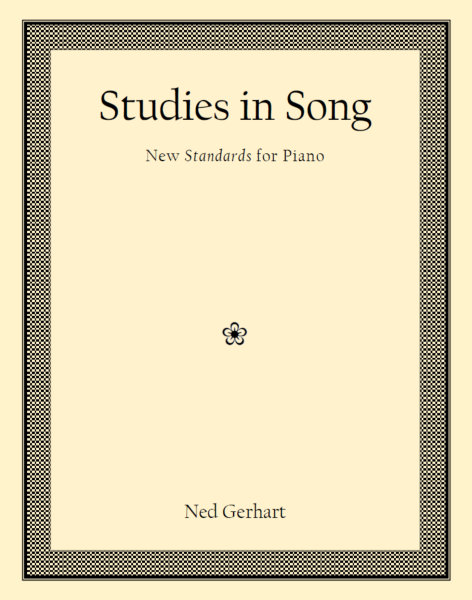Get this free StudiesInSong-ExamplePages.pdf to print and try out at your piano! Not a method book! Just interesting music you will enjoy playing! Hours of fun entertainment!


Get this free StudiesInSong-ExamplePages.pdf to print and try out at your piano! Not a method book! Just interesting music you will enjoy playing! Hours of fun entertainment!


What is the intriguing story behind this irresistable piano music?
Way back in 1988 my grandmother's mental faculties had fallen apart so much that she needed to be placed in a nursing home. The contents of her house were divided between family members, and I was lucky to inherit her grand piano. Grandma was a very good piano player, and this made her a popular young woman in the era before radio exisited. She would tell us that instead of flowers or chocolates, young men would bring her poplular sheet music, and people would sing songs together for entertainment in the evening. I still have a big box of this World War I-era sheet music in the attic.
Despite my batchelor's degree in Music Education (I'm a clarinet/sax player), I never managed to develop any useful skill at the piano. I don't know how I passed...in retrospect, it seems to me that there is nothing so important as being able to play the piano when you need to. (Young musicians: take heed.) So there I was with a beautiful grand piano taking up a lot of space in the livingroom, and not being able to do much more than chopsticks on it. After about a year of this situation, I decided that I was somehow going to learn to convincingly play at least one piece on the piano, if for no other reason, just to be able to hear the sonorous tones of grandma's piano more often. I also had the idea that I might be able to dupe some naive listeners into believing I was a piano player on the strength of being able to play that one piece, a challenge which continues to give me a great deal of amusement.
I have always had an affinity for standard songs and ballads, and a few years earlier my mother-in-law had given me a couple of books published by Reader's Digest of this type of music, neatly arranged for piano. I picked one of the simpler-looking numbers, and learned it by rote, measure by measure, until I could play it back straight-through from memory. It was called Tenderly. That turned out to be easy enough, and was fun to play as well. So, when I had mastered Tenderly, I picked another, Up a Lazy River, and worked on memorizing it until it was completely under my fingers. Proud to see that I now had a repertoire, I kept up learning more music in this fashion for about a year, at which time I had nearly twenty old chestnuts to entertain myself with. Of course, I could not embellish them at all, nor do anything but play them back exactly as I had memorized them, but I was happy. (I still can't read piano music the way real piano players can - for me, it's all rote muscle-memory. I can't play most of the things I've written.)
Then one day, while I was assisting someone with his strained carrots, a fragment of a new melody occurred to me. I decided that I would attempt to write it down as piano music, since by then I was well-acquainted with various techniques for assembling standard-song-type piano music. I worked it out and wrote it down measure by measure, until finally I had finished an interesting AABA-form song. (It was in A-flat!) Pleased with my effort, I started in on another one a little later, then another one....in the first year after beginning these, I had completed ten of them.
That was in 1990. I found that producing piano music of this type to be a satisfying hobby, and kept at it, off and on, for the next 16 years. In 2006, I cleaned them up with Finale, and produced the first edition of Studies in Song, which I attempted to self-publish through a primitive Web 1.0 web site, even lamer than this one. Sadly, that effort was not very successful, and I shut it down 2012. After that, what to do with my piano music was a nagging question, and Lulu.com has been the answer. They take care of all the annoying aspects of publishing and selling books...when you order a book published through Lulu.com, they print a copy for you and mail it off. It's a very efficient system.
After creating the first edition of Studies in Song in 2006, I turned away from piano music to a variety of different hobbies. Recently (2017) I thought I would see if I could still write my style of piano music after a break of so many years. It turns out I can - the revised and extensively corrected second edition now available through Lulu.com includes three pieces that were not present in the 2006 edition (Springtime In Tasmania, Frosted, and New Shoes).
The various compositions comprising Studies in Song are arranged in a random order - nothing like the order the compositions were written. In case you are curious (please be curious), this listing will let you play through the book in the order the pieces were written. Do you notice any subtle changes in my writing as the years go by? If this sort of analysis interests you, I recommend striving for a PhD in musicology.